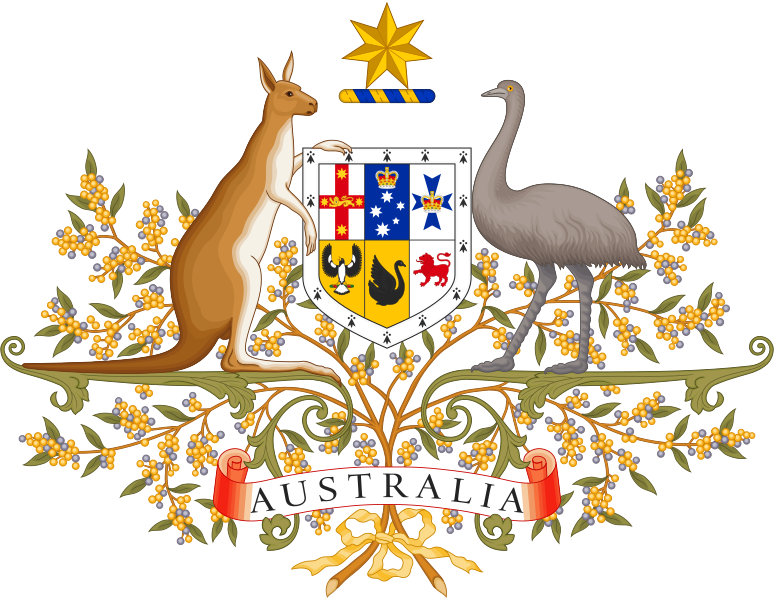



OK, good to know. I once heard from one of my spies monitoring Urban Meyer that he was thinking about recruiting one for special teams. I’m kinda thinking now that he might have been onto my surveillance game.

Yeah, he was doing a bit, Jim. The only thing Australia produces are kickers and wildfires. Still, I think we should take a closer look this week…
THE GREAT EMU WAR
Combatant 1: Australia
Combatant 2: 20,000 emus
Location of Conflict: Western Australia
Reason for Conflict: Somebody had a lifelong grudge against giant, flightless birds.
What happened? In the early 1930s, farmers in Western Australia were facing tremendous problems growing their wheat. Not only was a lack of promised government subsidies causing huge financial difficulty, but the emu population was raging out of control. The government, alarmed at growing separatist rhetoric in the rural western state, knew it needed to take action in order to win back favor and respect from the aggrieved farmers, though what action that was remained unclear at first.
With so many farmers having previously served as soldiers representing the British Empire in the Great War of 1914-18, they were well-accustomed to the incredible damage that machine guns and artillery were capable of inflicting upon an enemy, and thus they called on the government for military support in their war against the highly destructive emus.
In late October 1932, the Australian military showed up packing heat, ready to take on the 20,000-strong battalion of emus running amok in the western part of the country. The commanding officer and two gunners had with them two Lewis guns (British-made light machine guns deployable in a variety of situations) and 10,000 rounds of ammunition. All they needed was to set up shop, sit back, and open fire, and the problem would solve itself… at least, that was what they thought at the outset of the hostilities.
The Aftermath: The war ended in a decisive victory for the emus.
The birds, as luck would have it, were remarkably invulnerable to machine gun fire. They were fast, well-organized, and consistently on high alert – as well as being very tough. After trying to set up a variety of ambush scenarios, only to be faced time and time again with the birds running away, the Australian military found themselves unable to adequately deal with the invasion threat.
In the town of Campion, the military faced off against about a thousand birds – and when the guns opened fire, the birds simply ran away, speeding off to positions outside of the effective range of the guns. The next day, even with the gunners ambushing the birds, they only managed to shoot “about a dozen” or so. Subsequent days were even less effective – from trying to herd the birds in particular directions to putting a gun on a truck and trying to chase after them over bumpy terrain, nothing was effective, and after six days, the army returned in shame, after word of the plan made its way to Australia’s House of Commons and was derisively mocked. In a newspaper account, pulling a quote from one of the onlookers of the military action in Campion:
“The emus have proved that they are not so stupid as they are usually considered to be. Each mob has its leader, always an enormous black-plumed bird standing fully six-feet high, who keeps watch while his fellows busy themselves with the wheat. At the first suspicious sign, he gives the signal, and dozens of heads stretch up out of the crop. A few birds will take fright, starting a headlong stampede for the scrub, the leader always remaining until his followers have reached safety.”
Somewhere between 50-200 birds were killed in the six days of open combat; the humans suffered no casualties. For killing less than one-tenth of one percent of the nuisance herd, the army used 2,500 rounds of ammunition – 25% of the total they brought with them.
A second attempt at emu control was marginally more successful, with 986 birds killed and another 2500 that eventually died from injuries sustained from machine gun fire, but Australia failed to get its emu situation under control until the advent of individual bounties on emus, as well as vermin-proof farm fences, designed to keep out animals large and small, including rabbits, dingoes, and emus.
There are some incredible newspaper quotes that capture the absurdity of the whole situation, but the best one has to be from the Sun-Herald, in a retrospective article from 1953:
“If we had a military division with the bullet-carrying capacity of these birds it would face any army in the world… They can face machine guns with the invulnerability of tanks. They are like Zulus whom even dum-dum [ed. note: “exploding”] bullets could not stop.”
All this, for an animal that’s still on the Australian national coat of arms. Imagine what the country would have done if they’d truly despised these things?


Jim, what does the rulebook say on little pouches for holding the football? I know I had the NFL’s top ground game last year, but damn if one of them feathery fuckers wouldn’t lead the league in rushing yards.

Well, John, I dunno if it would be enough to properly secure the ball, but you can bet that an emu would be a much better teammate than a cassowary. I’m trying to get some of those guys to play linebacker. Who’s laughing now, Ohio State??
***
Information for this article taken from here, here, and here. Banner image by The Maestro.
You can’t spell cassowary without WAR!
Balls bypassing the “ass” in cassowary?
/thanks, COVID19!
Fun fact – male emus and cassowaries have a phallus, rather than just a cloaca. Lucky birds, they are.
Dammit! ASS WAR was right there!!